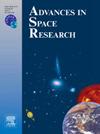Science objectives and design reference mission to Rubin crater on Mons Amundsen near the south pole of the Moon
IF 2.8
3区 地球科学
Q2 ASTRONOMY & ASTROPHYSICS
引用次数: 0
Abstract
We present a high-resolution geologic map of the Rubin crater region, located on Mons Amundsen, which has been identified as a promising site for future lunar exploration (AOI E in Wueller et al., 2024). We developed a design reference mission (DRM) to highlight the region’s potential for addressing key lunar science goals, particularly those related to the early lunar bombardment history, lunar crustal rocks, volatiles, impact processes at multiple scales, and regolith properties, as outlined by the National Research Council (2007). The Rubin crater, which formed about 1.58 billion years ago during the Eratosthenian period, excavated material from depths of up to ∼320 m, potentially reaching the underlying South Pole-Aitken (SPA) massif, Mons Amundsen. This makes the crater’s ejecta material, along with the Amundsen ejecta covering the massif, prime targets for sampling SPA-derived materials that can expand our understanding of early Solar System dynamics and the lunar cratering chronology. Additionally, the region hosts several permanently shadowed regions (PSRs), ideal for studying potential lunar volatiles and the processes affecting their distribution. The DRM proposes nine traverse options for exploration via walking EVAs, the Lunar Roving Vehicle (LRV), and LRV-assisted EVAs, with traverse lengths ranging from ∼3.6 km to ∼18.2 km. Each traverse is designed to sample diverse geologic units and address multiple scientific objectives. Given its scientific potential and favorable exploration conditions, the Rubin crater region is an ideal location for testing south polar landing operations, potentially paving the way for more complex missions, such as a Shackleton crater landing.
科学目标和设计参考任务是在月球南极附近的阿蒙森山上的鲁宾陨石坑
我们展示了位于蒙斯阿蒙森的鲁宾陨石坑区域的高分辨率地质图,该区域已被确定为未来月球探测的有希望的地点(AOI E in Wueller et al., 2024)。我们开发了一个设计参考任务(DRM),以突出该地区在解决关键月球科学目标方面的潜力,特别是那些与早期月球轰击历史、月球地壳岩石、挥发物、多尺度撞击过程和风化层特性相关的目标,正如国家研究委员会(2007)所概述的那样。鲁宾陨石坑形成于大约15.8亿年前的埃拉托斯特尼时期,挖掘出的物质深度高达320米,可能到达南极艾特肯(SPA)地块,阿蒙森山。这使得陨石坑的喷出物,以及覆盖该块的阿蒙森喷出物,成为采样spa衍生物质的主要目标,这些物质可以扩展我们对早期太阳系动力学和月球陨石坑年代学的理解。此外,该区域拥有几个永久阴影区域(PSRs),是研究潜在月球挥发物及其影响其分布过程的理想场所。DRM提出了通过行走式eva、月球漫游车(LRV)和LRV辅助eva进行探索的九种穿越选项,其穿越长度从~ 3.6公里到~ 18.2公里不等。每次穿越都是为了采样不同的地质单位,并解决多个科学目标。考虑到它的科学潜力和有利的勘探条件,鲁宾陨石坑地区是测试南极着陆操作的理想地点,可能为更复杂的任务铺平道路,比如沙克尔顿陨石坑着陆。
本文章由计算机程序翻译,如有差异,请以英文原文为准。
求助全文
约1分钟内获得全文
求助全文
来源期刊

Advances in Space Research
地学天文-地球科学综合
CiteScore
5.20
自引率
11.50%
发文量
800
审稿时长
5.8 months
期刊介绍:
The COSPAR publication Advances in Space Research (ASR) is an open journal covering all areas of space research including: space studies of the Earth''s surface, meteorology, climate, the Earth-Moon system, planets and small bodies of the solar system, upper atmospheres, ionospheres and magnetospheres of the Earth and planets including reference atmospheres, space plasmas in the solar system, astrophysics from space, materials sciences in space, fundamental physics in space, space debris, space weather, Earth observations of space phenomena, etc.
NB: Please note that manuscripts related to life sciences as related to space are no more accepted for submission to Advances in Space Research. Such manuscripts should now be submitted to the new COSPAR Journal Life Sciences in Space Research (LSSR).
All submissions are reviewed by two scientists in the field. COSPAR is an interdisciplinary scientific organization concerned with the progress of space research on an international scale. Operating under the rules of ICSU, COSPAR ignores political considerations and considers all questions solely from the scientific viewpoint.
 求助内容:
求助内容: 应助结果提醒方式:
应助结果提醒方式:


